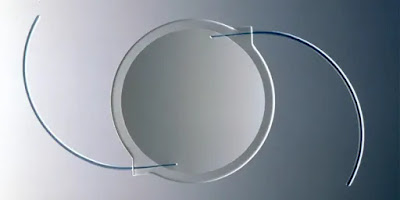Intraocular Lens; a Lens Implanted In the Eye as Part of a Treatment for Cataracts
 |
Intraocular Lens |
An intraocular lens (or IOL) is a tiny, artificial lens that replaces the natural lens of the eye through cataract surgery to restore both near and distant vision. To treat cataracts, the cloudy lens is surgically removed and replaced with an IOL to restore vision (both near and distant). A cataract is a clouding of the normally clear lens of the eye. For people who have cataracts, looking through a cloudy lens is like looking through a frosty or foggy window. Cataracts occur as a natural part of the aging and are the leading cause of blindness in people over 60.
According to the National Eye Institute, the number of people in the United States with cataract is expected to double from 24.4 million to about 50 million by 2050. Thus, with the increasing prevalence of cataract and growing geriatric population worldwide, the demand for intraocular lens is also increasing with a rapid pace. For instance, in August 2019, Alcon announced the commercial launch of FDA (Food and Drug Administration) approved AcrySof IQ PanOptix Trifocal Intraocular Lens (IOL).
PanOptix deliver an exceptional combination of near, intermediate, and distance vision while significantly reducing the need for glasses after surgery. IOLs have been around since the late 1940s and were the first devices to be implanted in the body. Unlike natural lenses, IOLs do not break down over a person's lifetime and do not need to be replaced. Multifocal intraocular lenses find popular use in improving post-surgical vision outcomes. Many other different types of IOLs available to treat various visual elements, such as cataract.
IOLs have been considered to be safe, and the standard of care in cataract surgery. Intraocular lenses not only improve vision by removing cataracts, but can also correct for farsightedness, nearsightedness, and astigmatism. Intraocular lens is implanted in the eye after the eye's natural lens has been removed to restore vision.



Comments
Post a Comment